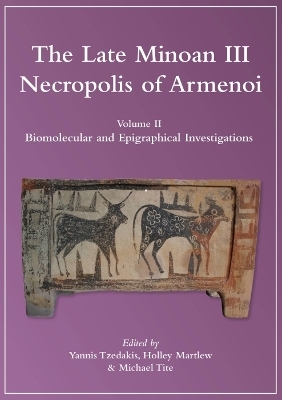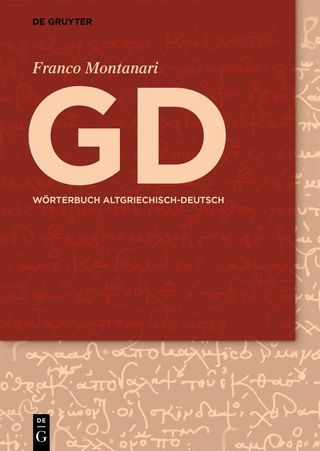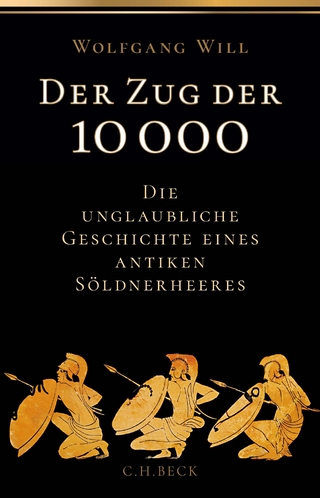
The Late Minoan III Necropolis of Armenoi
Casemate Publishers (Verlag)
979-8-88857-046-3 (ISBN)
- Titel nicht im Sortiment
- Artikel merken
The Late Minoan III Necropolis of Armenoi, Crete (ca. 1390–1190 BC) is the only intact, complete Late Minoan necropolis presently known, of which 232 tombs have been excavated. The research project was the first large-scale genomic sampling of skeletal material from a single site in Bronze Age Greece, as well as being the first time a multi-disciplinary approach with ancient DNA as its focus has been conducted on a large, well-curated necropolis assemblage. As such it provides a unique opportunity to answer archaeological questions, the most important of which are kinship, an analysis of the origin and ancestry of those buried in the tombs, the homogeneity of the population or otherwise, and diet. The analysis programme was only possible because the tombs had not been seriously disturbed, and human skeletal remains had survived and been expertly conserved. The results of ancient DNA, stable isotope analysis, osteological analysis, and radiocarbon dating are presented, providing the first detailed record of ancestry and kinship in this iconic period of Eastern Mediterranean prehistory.
In addition, the long-debated problem of the location of the wealthy city of da-_22-to, referred to many times in the Linear B tablets, is addressed and key evidence is presented. The rich finds in the Necropolis, the town excavation, and in the environs, support the interpretation that the ‘city’ that built the Necropolis is da-_22-to.
Dr. Yannis Tzedakis is the Director-General Emeritus of the Greek Archaeological Service, the excavator of the Late Minoan III Necropolis of Armenoi and Co-Director of the Armenoi Project. Amongst other publications, he is co-editor of Archaeology Meets Science: Biomolecular Investigations in Bronze Age Greece (with Holley Martlew and Martin Jones, Oxbow Books, 2008). Dr. Holley Martlew is the Co-Director of the Armenoi Project and the principal behind the initiation of a project which applied state of the art scientific analysis to ceramic artefacts and skeletal material from 16 sites in Crete, the Greek mainland, other Greek islands and the island of Vivara in the Bay of Naples. The results of this project were mounted in six international exhibitions in Europe and the USA. Professor Michael J. Tite is a Fellow of Linacre College, Emeritus Professor of Archaeological Science and former Director of the Research Laboratory for Archaeology and the History of Art in the University of Oxford.
List of figures and tables
Contributors
The Armenoi Project
Acknowledgements
Conventions, abbreviations and chronology
Foreword
Map of site
1. The Late Minoan III Necropolis of Armenoi: introduction
Holley Martlew
The discovery of the Necropolis
The tombs
Publication programme
The scientific programme
PART I: SCIENTIFIC ANALYSES
2. Food and drink: what scientific analysis of pottery revealed through organic residue analysis
Holley Martlew
Introduction
Materials and methods
Results
3. The osteological study of Tomb 159
Darlene Weston
Introduction
Tomb 159: its characteristics and contents
Burial context and MNI
Preservation
Age estimation
Biological sex estimation
Population variability
Dental health and disease
Palaeopathology
Osteobiography summaries
Discussion and conclusions
Summary
4. Multi-isotopic (C, N, S, Sr) measurements of human skeletal material
Michael P. Richards
Introduction
Isotope analysis background
Sample selection
Methodology
Results
Discussion
Conclusions
5. Bioarchaeological analyses of human and faunal skeletal remains and radiocarbon dating
M. George B. Foody, Peter W. Ditchfield and Ceiridwen J. Edwards
Introduction
Materials and methods
Dietary stable isotopes
Ancient DNA
Radiocarbon dating
Conclusions
Appendix: species identification of 13 animal bones from the Necropolis
6. The human dimension: the archaeological significance of the scientific results
Holley Martlew and Yannis Tzedakis
Introduction
The Total Station survey
Stable isotope analysis (incorporating skeletal summaries by Darlene Weston)
Ancient DNA (incorporating skeletal summaries by Darlene Weston)
Conclusions
Appendix: catalogue (original compilation by Vicky Kolivaki)
PART II: THE ‘CITY’ OF ARMENOI
7. The identification of da-*22-to
Louis Godart
C 979
Ce 59
V 1002
EL Z 1
8. Studies at the ‘city’ of Armenoi, the Necropolis and their environs
Peter W. Ditchfield and Holley Martlew
Faunal collagen carbon and nitrogen stable isotopic analysis (Peter W. Ditchfield)
Minerals in the environs of Armenoi (Holley Martlew)
Postscript: a tribute to Andrew Giże (Holley Martlew)
9. The archaeological evidence which supports the identification of the Late Minoan III ‘city’ of Armenoi as da-*22-to
Holley Martlew and Yannis Tzedakis
1. The ‘city’ of Armenoi
2. The Late Minoan III Necropolis of Armenoi (Late Minoan IIIA:1–Late Minoan IIIB:2 ca.1390–1190 BC)
3. Contents of the tombs (with a contribution by Olga Krzyszkowska)
4. Correspondence with Linear B tablets cited as evidence by Godart
5. Unlocked secrets
Appendix: catalogue (original compilation by Vicky Kolivaki)
10. Western Crete, the ‘city’ of Armenoi and the fall of Pylos
Louis Godart
Introduction
Seals and seal impressions
The frescoes of Pylos
Ivories
Linear B documents and their chronology
Conclusions
Postscript: the ‘city’ of Armenoi, da-*22-to (Yannis Tzedakis and Holley Martlew)
Index
| Erscheinungsdatum | 01.12.2023 |
|---|---|
| Zusatzinfo | 120 b/w illustrations |
| Sprache | englisch |
| Maße | 216 x 280 mm |
| Themenwelt | Geisteswissenschaften ► Archäologie |
| Geschichte ► Allgemeine Geschichte ► Altertum / Antike | |
| Informatik ► Weitere Themen ► Bioinformatik | |
| Naturwissenschaften ► Biologie ► Genetik / Molekularbiologie | |
| ISBN-13 | 979-8-88857-046-3 / 9798888570463 |
| Zustand | Neuware |
| Haben Sie eine Frage zum Produkt? |
aus dem Bereich


